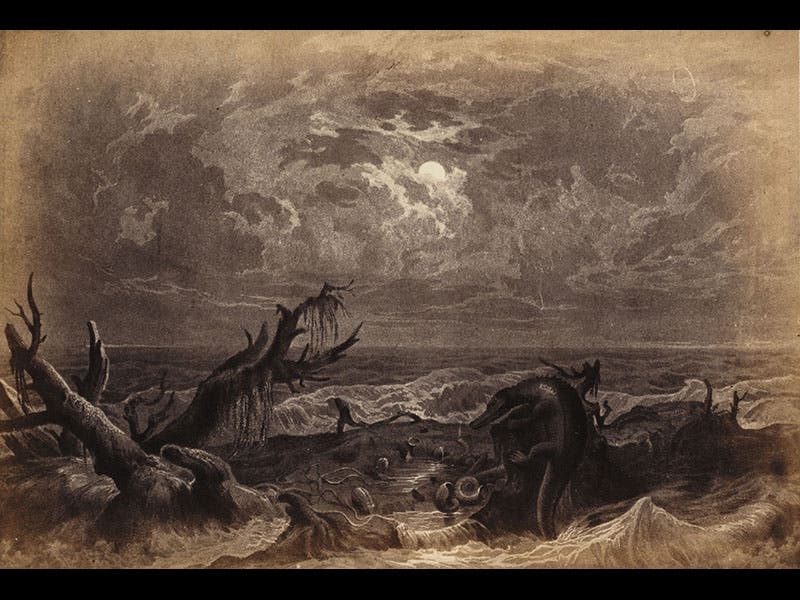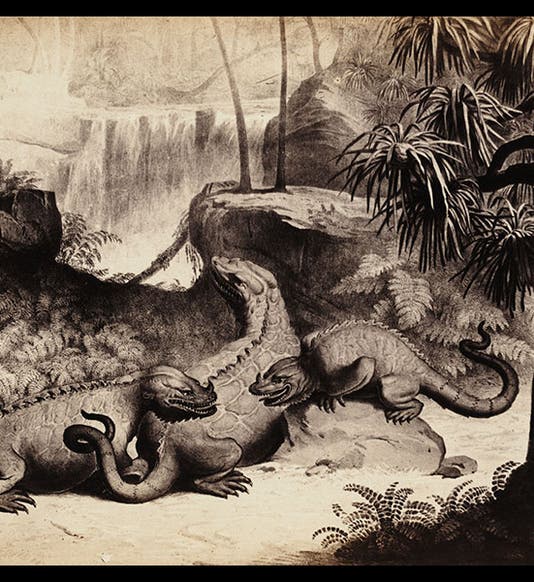Scientist of the Day - Franz Unger




Franz Unger, a Viennese botanist, was born Nov. 30, 1800. Unger wrote a number of books on prehistoric life; today we feature Die Urvelt (1851), a large plate-book that contains 14 sizeable lithographs depicting different periods in Earth history, such as the Muschelkalk (what we would now call the Middle Triassic) or the Weald ( Early Cretaceous). As a pioneer paleobotanist, Unger paid more attention to the plants than the prehistoric animals that walked among them, but he did include his share of amphibians, reptiles, and invertebrates such as ammonoids. Sometime before December of 1859, an English translation of Die Urvelt was published as Ideal Views of the Primitive World, with the plates reduced in size. We do not have Die Urvelt in our collection, but we do have The Primitive World. What makes the book especially interesting is that the original lithographs were photographically reduced and then printed as photographs. This is one of the earliest books in our collection to have actual photographic prints as images. We reproduce three of them here: the Weald, with three dinosaurs, two Iguanodon and a Hylaeosaurus (first image); the Muschelkalk, with ammonites and a Nothosaurus giganteus prospecting for dinner (second image); and the frontispiece (third image), which shows a cluster of Benjamin Waterhouse Hawkins’ miniature dinosaur models, a scene posed and photographed especially for this edition of Unger’s book. In addition, we show the attractive gold-embossed front cover, and the rear endpaper (fifth image), an advertisement for a publication on dinosaurs by Hawkins, "to be published in December, 1859,” which allows us to date this publication.
We exhibited Unger's view of the Ice Age in our 2009 exhibition, Ice: A Victorian Romance, and we showed the plate of "The Alluvium," or the Garden of Eden, in Blade and Bone: Science Embraces Lithography (2012).
Dr. William B. Ashworth, Jr., Consultant for the History of Science, Linda Hall Library and Associate Professor, Department of History, University of Missouri-Kansas City. Comments or corrections are welcome; please direct to ashworthw@umkc.edu.







